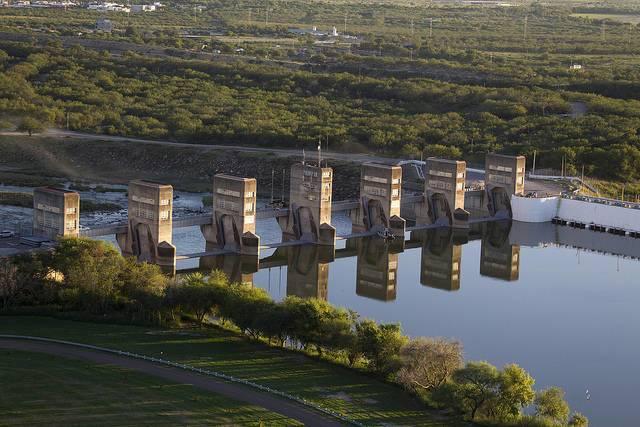
U.S. President Donald Trump’s proposed border wall poses a bevy of problems that stretch beyond the question of who will pay for it. Those challenges include rising labor costs, the loss of commerce suffered by local businesses on both sides of the border, and even threats of a land grab to make way for the wall's construction -- an affront to U.S. citizens, especially those who held title to their properties for generations.
Now the wall has hit another snag. As NPR reported this week, some portions of the wall could violate a treaty that was negotiated between the U.S. and Mexico back in 1970.
The problem is a boundary treaty, to which both countries agreed in order to settle questions over how the Rio Grande and Colorado Rivers demarcated much of the 1,954-mile border. Some walls and fencing that were built during previous American presidential administrations have already been linked to flooding and property damage. Now, Mexican officials have had enough.
In 2008, floodwaters that built up against steel fencing crested and damaged parts of the Organ Pipe Cactus National Monument in Arizona, inundating the border hamlet of Lukeville. Walls exacerbated flooding in the border cities of Nogales in Mexico and Arizona, as garbage that accumulated due to rising waters eventually caused a section of the fence to collapse, damaging dozens of homes. Engineers who work on both sides of the border have said that additional walls constructed within floodplains could in effect become dams, wreaking havoc in both rural areas and border towns alike when sudden rains occur.
Key to deciding whether this wall can continue to expand is the International Boundary and Water Commission (IBWC), which is tasked with settling any disputes over construction projects that could have an impact on the flow of the Rio Grande or its floodwaters. Much of IWBC’s work is rather mundane, with much of its work concerning aquifers, levees and the repair of infrastructure along this long desert frontier.
But that scope of work could suddenly change. Engineers working in Mexico have said that some of the wall’s proposed construction could violate this 47-year-old treaty. Both Mexican and American officials on the IWBC must agree to construction plans by either side if they could potentially affect the flow of the Rio Grande. If these disputes cannot be settled by the IWBC, then such cases could end up in an international court.
In the past, there have been conflicts over whether sections of a border fence could affect the flow of floodwaters; and despite protests from Mexico, some projects have progressed anyway. Such violations were overlooked, largely because the previous two presidential administrations were seen as relatively conciliatory toward Mexico.
But Trump’s tenor has changed the dynamic between the two countries. Threats that a wall along the Rio Grande would be built on the Mexican shore of the river, clearly a violation of the country’s sovereignty, have not helped the Trump administration’s case. Mexican officials are reportedly ready to fight back against any projects their country feels could cause environmental damage on its side of the border. They are also confident that Mexico would emerge victorious if such a case between the U.S. and Mexico goes to an international tribunal.
Of course, tracking the progress of Trump’s wall is akin to watching a ping-pong match. On Thursday the president, who often boasts about his negotiating skills, negotiated out of his demands that Congress provide funds for the project – before such talks even began. But the only thing we can predict about this president is that he has proven to be as entirely unpredictable in the White House as he was on the campaign trail. Local businesses and environmental organizations can take a deep breath for now, but do not be surprised if somehow this debate festers yet again, even as engineers and environmentalists on both sides of the border have made it clear that the environmental risks of such a project outweigh the supposed security benefits.
Image credit: U.S. Customs and Border Protection/Flickr

Leon Kaye has written for 3p since 2010 and become executive editor in 2018. His previous work includes writing for the Guardian as well as other online and print publications. In addition, he's worked in sales executive roles within technology and financial research companies, as well as for a public relations firm, for which he consulted with one of the globe’s leading sustainability initiatives. Currently living in Central California, he’s traveled to 70-plus countries and has lived and worked in South Korea, the United Arab Emirates and Uruguay.
Leon’s an alum of Fresno State, the University of Maryland, Baltimore County and the University of Southern California's Marshall Business School. He enjoys traveling abroad as well as exploring California’s Central Coast and the Sierra Nevadas.














